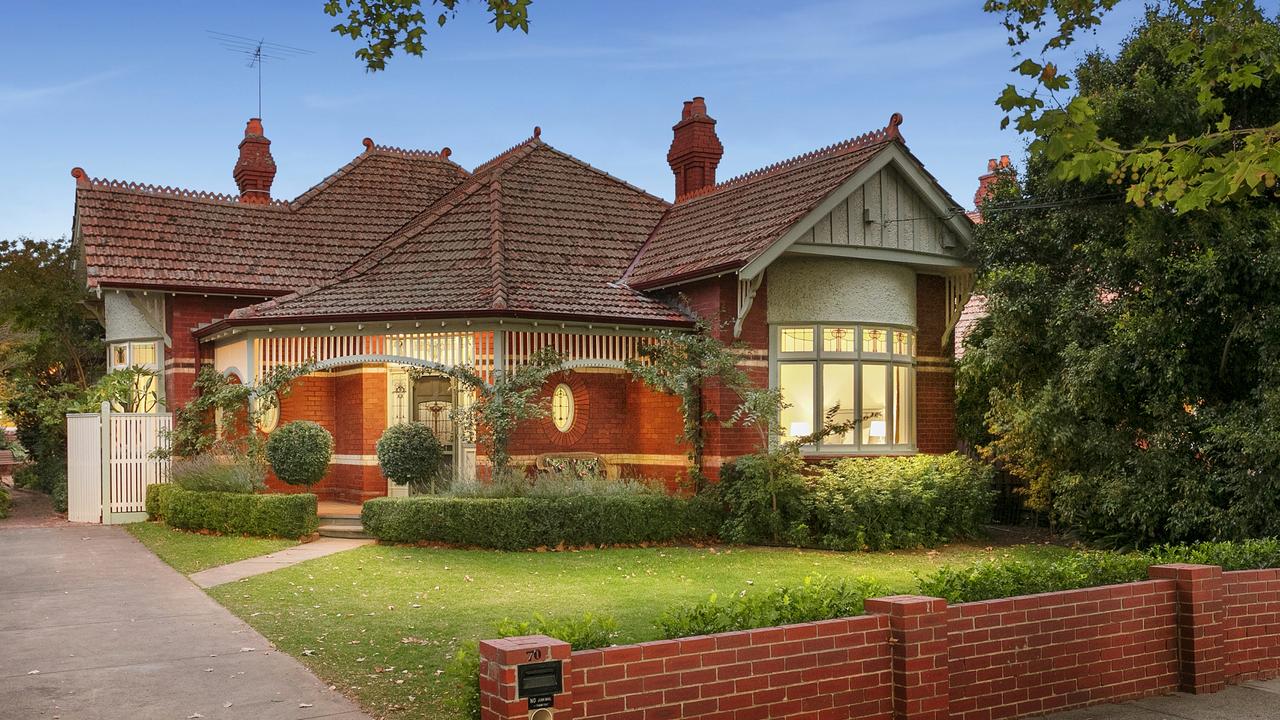Property figures reveal Sydney and Melbourne are nearing the bottom of the downturn but Hobart news isn’t so good
Latest property data says the worst may be behind us, but the news isn’t so good for these Australian capital cities.

The property market is at a shifting point with Sydney and Melbourne prices edging to the bottom of the cycle while the outperforming markets are beginning to plateau, new data reveals.
The country’s two major capitals were expected to weaken for another few months but voters slamming the door on Bill Shorten’s proposal to change negative gearing and capital gains concessions may have brought that recovery forward.
RELATED: Auction clearance rates rise after Coalition win
RELATED: RBA could cut cash rate to 0.5 per cent
This, combined with the Australian Prudential Regulation Authority easing access to finance will stimulate the sector, realestate.com.au chief economist Nerida Conisbee said.
Sydney prices were flat in May, according to the site’s median property data, leaving the year-on-year loss at 7.5 per cent and a fall of 10.6 per cent from its peak in September 2017.
Melbourne lost 0.2 per cent for the month, falling 6 per cent over 12 months and a peak to trough weakening of 6.2 per cent.
Ms Conisbee said there are signs the worst of the Sydney downturn is in the past despite investor confidence being battered and bruised.
“It’s not going to be a massive recovery, the key is that we had boom-like conditions leading up until September 2017 when we had a couple of years of double digit growth,” she told news.com.au.
“It was quite extreme and I don’t think we’ll see that again.”
It was widely tipped the Brisbane market would struggle most over the last 18 months given the city’s oversupply of apartments, but its year-on-year fall was just 1.2 per cent after not changing in May.
Adelaide was also unchanged for the month and edged 0.2 per cent higher in the last 12 months, while Hobart’s period of sustained growth is at its peak.
The Tasmanian capital, which has been the darling of the nation’s property market over the last two years, rose 0.2 per cent in May and 1.2 per cent year-on-year.
“The issue is Hobart is expensive now,” Ms Conisbee said.
“There’s $1 million-plus suburbs in the city now so the affordability edge that it had is gone, so you’re not going to get the investor activity that was there.
“There’s still a lot of pressure on housing in Hobart, so that will keep things from falling because low rental vacancies and construction levels have been subdued for a long time.
“But that heat has now come out of that market.”
Ms Conisbee said the housing supply issues in Hobart could transcend the property market.
“People were moving to Hobart because there were jobs and there was affordable housing so it was a really nice combination,” she said.
Canberra rose 0.1 per cent for the month and 0.7 per cent over the last year, but is another stronger market closer to flattening out.
The nation’s capital was due to experience strong demand for housing with the expected change of prime minister.
But the city won’t get the influx of staff traditionally associated with a new resident at The Lodge.
“I can’t see the Scott Morrison Government rapidly increasing staffing levels, they certainly won’t need the consultants that the Labor Party would have needed to get the new government up and running,” Ms Conisbee said.
But, like the rest of Australia, the ALP’s loss brings more favourable conditions for property investors.
According to the figures, Perth and Darwin markets are both languishing having fallen 15.9 and 23.2 per cent respectively from peaks in 2014.
ALL EYES ON AUCTION CLEARANCE RATE
Last weekend, strong auction results solidified the view of many the Coalition Government’s victory would stimulate the struggling property market.
Sydney recorded preliminary auction clearance rates of 69.9 per cent on May 25, according to CoreLogic, which was expected to achieve its best final clearance rate for the year adjusting for slippage.
“There are obviously some issues which would buoy confidence,” CoreLogic residential auction market commentator Kevin Brogan told news.com.au.
“The fact that investors are looking at continuity of the negative gearing and the capital gains tax concessions would be one thing.
“But also interesting to note is that post-election there’s been a fair bit of talk about APRA changing the serviceability buffer to make it less onerous for a new borrower.”
It’s all but guaranteed the Reserve Bank will cut the cash rate for the first time in nearly three years on Tuesday — but how low will it go?
Economists are virtually unanimous in predicting a 25 basis point cut at the RBA’s June meeting that would bring the cash rate to a new record low of 1.25 per cent.
A further cut to 1 per cent is widely expected in August.
Westpac chief economist Bill Evans last week went one further, predicting that weak gross domestic product (GDP) growth, falling house prices and rising unemployment would force another cut in November to 0.75 per cent.
“Our forecasts for employment, wages growth, economic growth, inflation and conditions in the housing market are consistent with the need for policy to ease through the full course of 2019,” Mr Evans told The Guardian.
JP Morgan chief economist Sally Auld was even more pessimistic on Wednesday, telling The Australian Financial Review she saw rates hitting 0.5 per cent by 2020.
“We think the call for a terminal cash rate of 0.5 per cent makes sense given the cyclical and structural backdrop for the Australian economy,” Ms Auld said.
“We can’t be definitive that 0.5 percentage points is the effective lower bound for the policy rate in Australia. It may well be lower, and we suspect policymakers are open-minded about this possibility given the experience in other developed market economies.”
REA Group chief economist Nerida Conisbee, however, believes it’s “next to impossible we’ll see four cuts”.
“If we did the economy would be going terribly,” she said.
“If that was to happen the US-China trade war would be massive and we would be seeing rapidly rising unemployment. It would be a pretty dire economic situation if we had four cuts.
“Although property does benefit from rate cuts and property won’t be hit as much as retail trade, lots of people losing their jobs would be very, very bad news for property.”
Continue the conversation on Twitter @James_P_Hall or james.hall1@news.com.au




